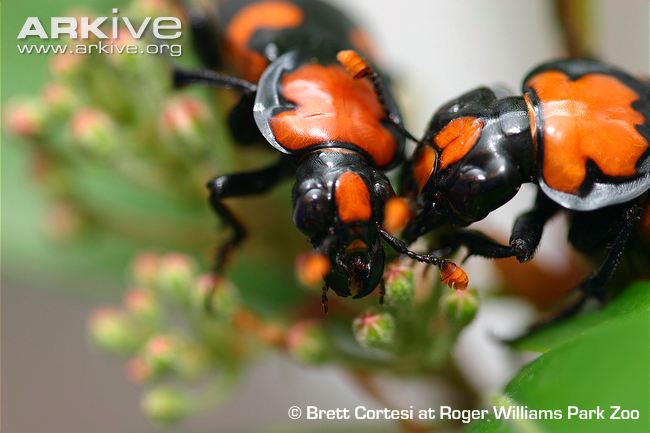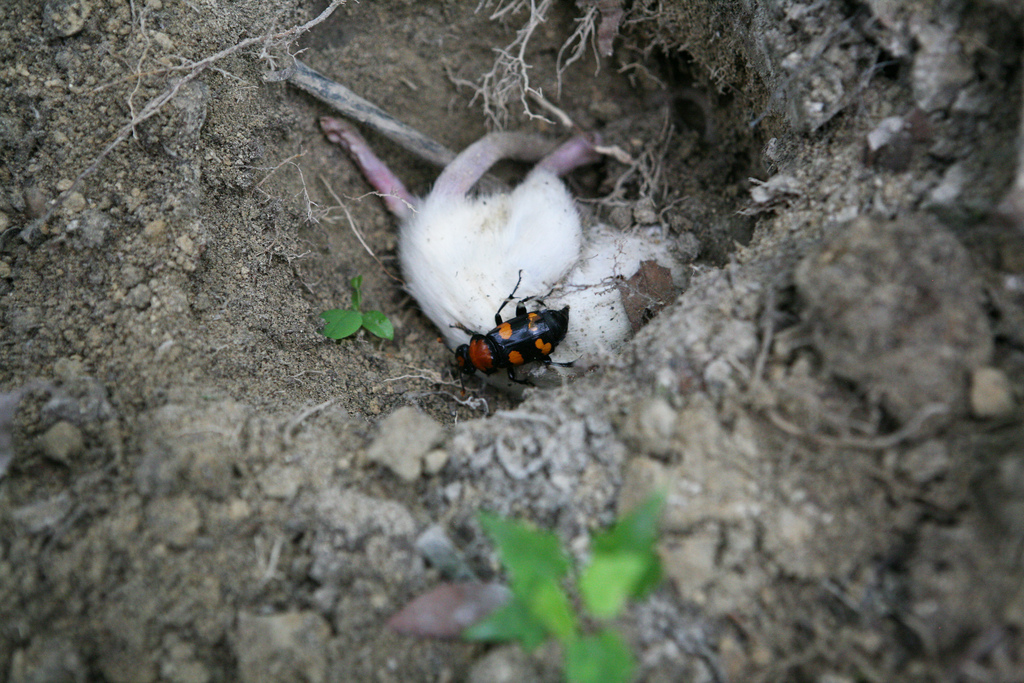Reproduction
The reproduction cycle of
Nicrophorus americanus
is really fascinating! First and foremost, both the male and female
will participate in caring for their offspring, which is very rare
in the order
Coleoptera. Also, unlike most species,
the male and female are sexually
monomorphic meaning they are the same
physically in size and strength.
By
using their
chemoreceptors located on the antennae,
the male and female
Nicrophorus americanus
utilize a mammal’s carcass in order to reproduce. Typically they
search for a carcass that is about 80-100g in a habitat where there
is soil so that the carcass can be buried.
By breaking up the soil around the carcass, the male and
female
Nicrophorus americanus
buries the animal’s body underground (Creighton, 1998). After this
process is finished, they will then proceed to create a ball from
the excess flesh and fur/ feathers that were removed during the
burial. The female is now ready to lay her eggs!
She will lay her eggs singly in the soil that surrounds the
carcass so that when her eggs hatch they are able to enter the
balled up carcass and feed
(Meierhofer,
1999).
Both the male and female stay with their larvae for several days in
order to regurgitate food, preserve their mammal carcass, and also
defend their young. The male will be the first one to leave, and
soon after the female will also abandon the larvae (Creighton,
1998).
Image courtesy of Wayne National Forest
The average time it takes for Nicrophorus americanus to bury
a carcass, hatch their eggs, and leave was between 62 and 84 days.
Physiological and ecological factors are a factor during Nicrophorus
americanus’ season of reproduction, especially depending on
temperature.
When the temperature is lower, the
development of the larvae will take longer
(Meierhofer, 1999).
Learn why Nicrophorus americanus is an Endangered Species
Back to HOME
.


